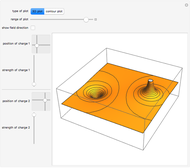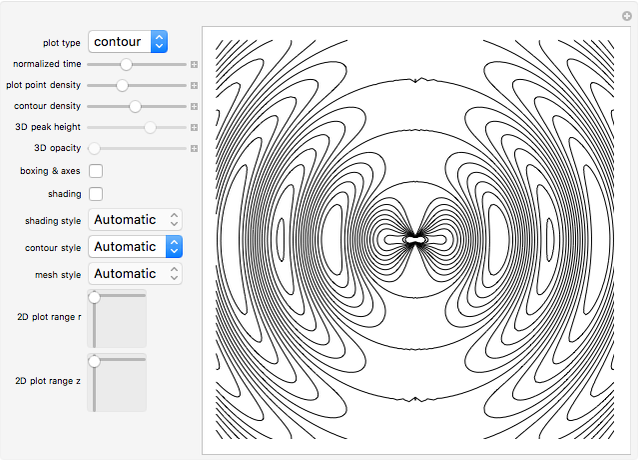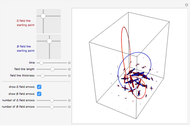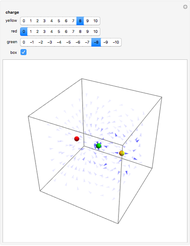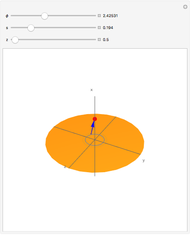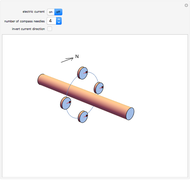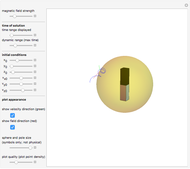Dipole Fields Are Complicated

Requires a Wolfram Notebook System
Interact on desktop, mobile and cloud with the free Wolfram Player or other Wolfram Language products.
Dipoles are the simplest magnetic objects in physics. Nonetheless, they can cause some surprisingly complex behavior for a charged particle moving nearby.
[more]
Contributed by: Jay Farrell (SAIC -- Huntsville, Alabama, USA) (March 2011)
Open content licensed under CC BY-NC-SA
Snapshots
Details
Increasing the strength of the magnetic field makes this mirroring more evident. For relatively low values of the field, the particle moves in a seemingly more erratic fashion while progressing slowly about the equator. For stronger values, the particle's spiral motion is tighter, and begins more to resemble the field line geometry.
Here, the translucent sphere pictured has nothing to do with the simulation; it is shown to help orient the viewer.
By increasing the time of the simulation until the particle moves around the sphere, a magnetic "shell" is seen. This shell structure resembles that experienced by charged particles moving about the Earth, but in a simplified way. The shape is reminiscent of the Van Allen belts around the Earth.
Varying the initial position and velocity of the particle produces additional, greatly varying behavior, including the possibility of escape from the system.
Snapshot 1: moderate field, showing magnetic reflection clearly along field lines ( )
)
Snapshot 2: same but run to 
Snapshot 3: weak field, showing less regular short term behavior
( )
)
Snapshot 4: strong field, showing magnetic reflection clearly along field lines ( )
)
Also, try animating the time evolution very slowly. Follow the progress of the red line segment (along the magnetic field at the current time step) and the green segment (along the velocity vector).
References:
D. P. Stern and M. Peredo. "Principles of the Magnetic Trapping of Charged Particles." (Nov 10, 2003)
D. P. Stern and M. Peredo. "The Inner Radiation Belt." (Nov 25, 2001)
Permanent Citation











